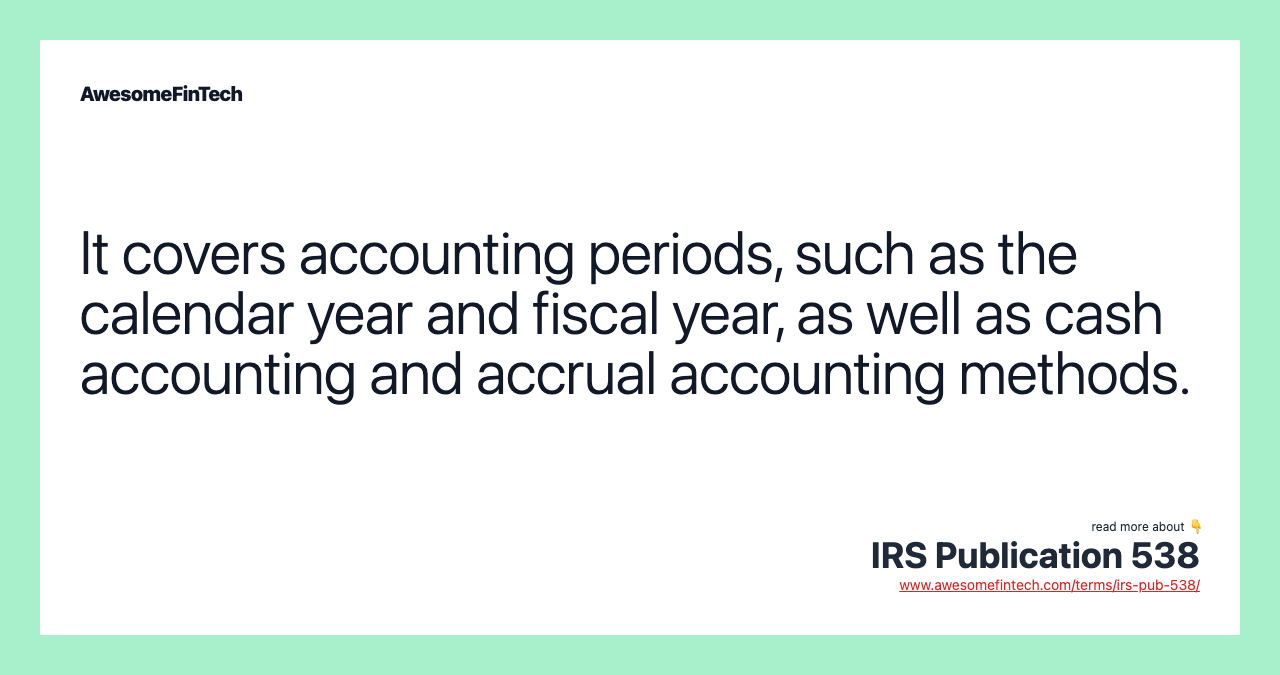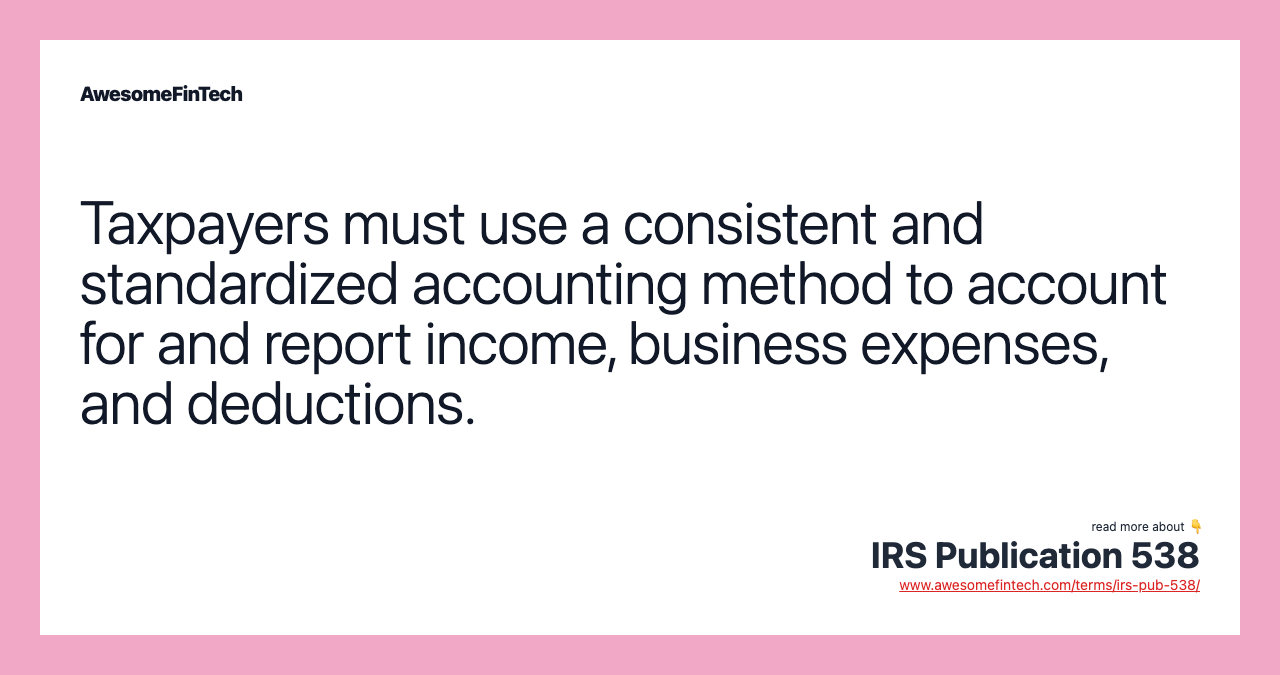IRS Publication 538
IRS Publication 538 is a document published by the Internal Revenue Service (IRS) that details the various commonly recognized accounting methods and periods, who they apply to, and how to abide by them. The IRS also issues several other informative publications related to tax filing and accounting practices for public consumption, such as IRS Publication 542 and Publication 552, Every taxpayer (individuals, business entities, etc.) must figure out their taxable income for an annual accounting period called a tax year. The most commonly used accounting methods are: **The cash method**: Under the cash method, you generally report income in the tax year that you receive it, and then deduct expenses in the tax year in which you pay them. It covers accounting periods, such as the calendar year and fiscal year, as well as cash accounting and accrual accounting methods. The calendar year — Jan. 1 to Dec. 31 — is the most common tax year, but other tax years may include a fiscal year (FY) and a short tax year.

More in Economy
What Is IRS Publication 538?
IRS Publication 538 is a document published by the Internal Revenue Service (IRS) that details the various commonly recognized accounting methods and periods, who they apply to, and how to abide by them. The IRS requires taxpayers to use a consistent and standardized accounting approach when reporting income and taxation and Publication 538 serves as a basic guide on how each of them work.



Understanding IRS Publication 538
IRS Publication 538 explains some of the rules for accounting periods and standard accounting methods. It provides a basic overview and, in some cases, you may have to refer to other sources for a more in-depth explanation of the topic.
The IRS also issues several other informative publications related to tax filing and accounting practices for public consumption, such as IRS Publication 542 and Publication 552,
Accounting Periods
Every taxpayer (individuals, business entities, etc.) must figure out their taxable income for an annual accounting period called a tax year. The calendar year — Jan. 1 to Dec. 31 — is the most common tax year, but other tax years may include a fiscal year (FY) and a short tax year.
If a calendar year is adopted as the filing year it must continue to be used even if the taxpayer incorporates, enters a partnership, or becomes a sole-proprietor. Special permission must be granted by the IRS to change the filing schedule.
Accounting Methods
Each taxpayer, whether they are an individual, a household, or a corporation, must also use a consistent and standardized accounting method, which is a set of rules for determining when to report income and expenses, and how to do so. The most commonly used accounting methods are:
Like the filing schedule, once you choose an accounting method, you will need to follow it consistently and apply for permission from the IRS in order to change the method or basis of accounting.
Once a relevant accounting period and method is chosen, you must abide by it consistently — accounting approaches can only be changed with special permission from the IRS.
Special Considerations
Publication 538 is periodically revised. The latest updates, reflecting new legislation or other fresh developments, can be accessed by visiting: IRS.gov/Pub538.
Related terms:
Accounting Method
Accounting method refers to the rules a company follows in reporting revenues and expenses in accrual accounting and cash accounting. read more
Accrual Accounting
Accrual accounting is an accounting method that measures the performance of a company by recognizing economic events regardless of when the cash transaction occurs. read more
Antitrust
Antitrust laws apply to virtually all industries and to every level of business, including manufacturing, transportation, distribution, and marketing. read more
Cash Accounting & Example
Cash accounting is a bookkeeping method where revenues and expenses are recorded when actually received or paid, and not when they were incurred. read more
Cash Basis Taxpayer
A cash basis taxpayer is a taxpayer who reports income and deductions in the year that they are actually paid or received. read more
Farm Income
Farm income refers to profits and losses incurred through the operation of a farm. read more
Fiscal Year (FY)
A fiscal year is a one-year period of time that a company or government uses for accounting purposes and preparation of its financial statements. read more
Income
Income is money received in return for working, providing a product or service, or investing capital. A pension or a gift is also income. read more
Incorporation
Incorporation is the legal process by which a business entity is formed. A corporation is a separate legal entity from its owners. read more